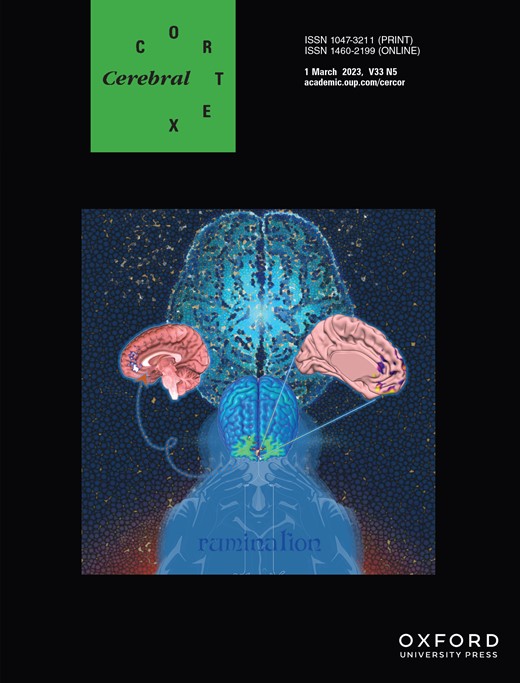-
Views
-
Cite
Cite
Yezhou Wang, Jessica Royer, Bo-yong Park, Reinder Vos de Wael, Sara Larivière, Shahin Tavakol, Raul Rodriguez-Cruces, Casey Paquola, Seok-Jun Hong, Daniel S Margulies, Jonathan Smallwood, Sofie L Valk, Alan C Evans, Boris C Bernhardt, Long-range functional connections mirror and link microarchitectural and cognitive hierarchies in the human brain, Cerebral Cortex, Volume 33, Issue 5, 1 March 2023, Pages 1782–1798, https://doi.org/10.1093/cercor/bhac172
Close - Share Icon Share
Abstract
Higher-order cognition is hypothesized to be implemented via distributed cortical networks that are linked via long-range connections. However, it is unknown how computational advantages of long-range connections reflect cortical microstructure and microcircuitry.
We investigated this question by (i) profiling long-range cortical connectivity using resting-state functional magnetic resonance imaging (MRI) and cortico-cortical geodesic distance mapping, (ii) assessing how long-range connections reflect local brain microarchitecture, and (iii) examining the microarchitectural similarity of regions connected through long-range connections.
Analysis of 2 independent datasets indicated that sensory/motor areas had more clustered short-range connections, while transmodal association systems hosted distributed, long-range connections. Meta-analytical decoding suggested that this topographical difference mirrored shifts in cognitive function, from perception/action towards emotional/social processing. Analysis of myelin-sensitive in vivo MRI as well as postmortem histology and transcriptomics datasets established that gradients in functional connectivity distance are paralleled by those present in cortical microarchitecture. Notably, long-range connections were found to link spatially remote regions of association cortex with an unexpectedly similar microarchitecture.
By mapping covarying topographies of long-range functional connections and cortical microcircuits, the current work provides insights into structure-function relations in human neocortex.


